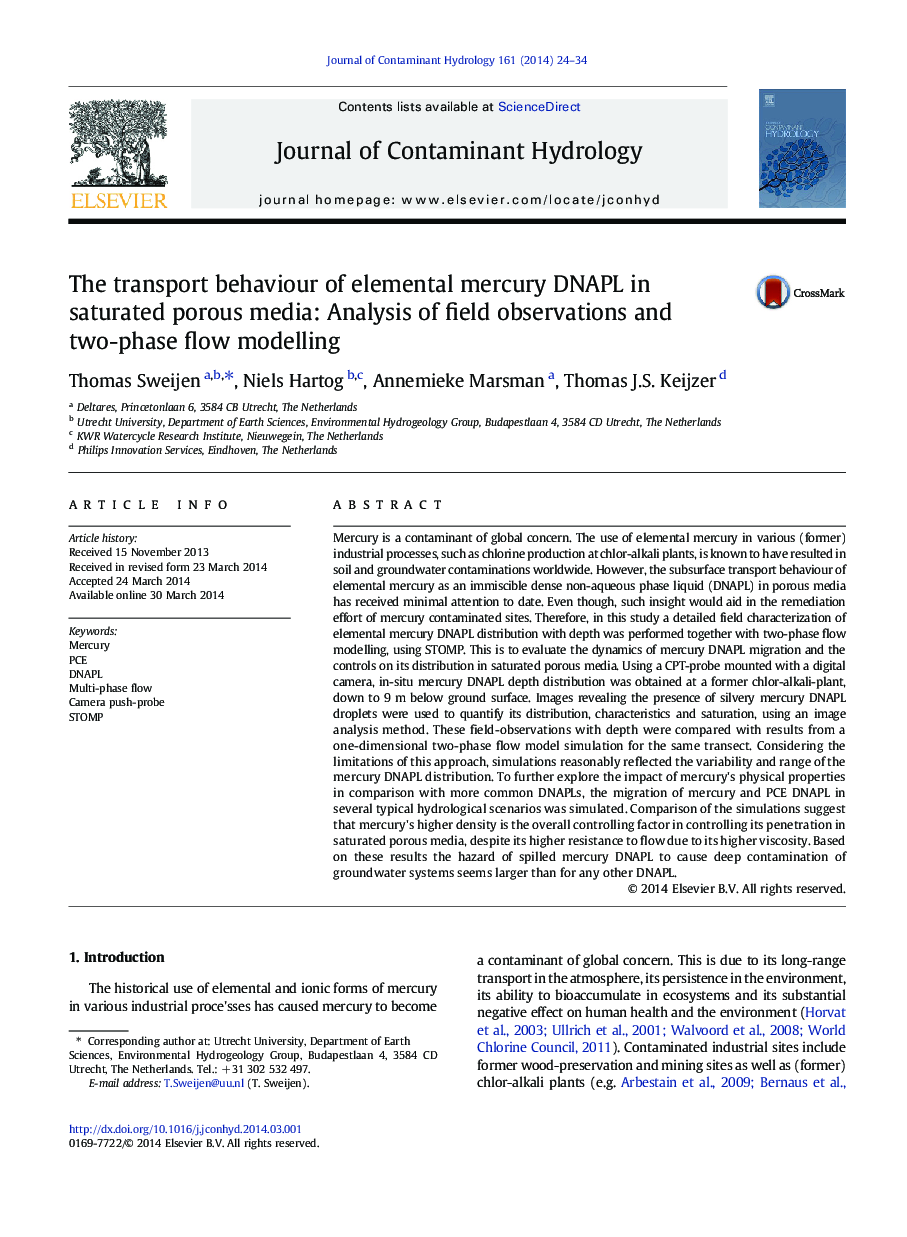| Article ID | Journal | Published Year | Pages | File Type |
|---|---|---|---|---|
| 4546556 | Journal of Contaminant Hydrology | 2014 | 11 Pages |
•We have studied the transport behaviour of mercury DNAPL in saturated porous media.•In-situ images of a soil revealed mercury DNAPL distribution up to 9 m depth.•Simulations of mercury DNAPL transport were similar to field-observations.•Multiple model scenarios indicated the high penetration potential of mercury DNAPL.•The large density and low residual saturation govern mercury DNAPL migration.
Mercury is a contaminant of global concern. The use of elemental mercury in various (former) industrial processes, such as chlorine production at chlor-alkali plants, is known to have resulted in soil and groundwater contaminations worldwide. However, the subsurface transport behaviour of elemental mercury as an immiscible dense non-aqueous phase liquid (DNAPL) in porous media has received minimal attention to date. Even though, such insight would aid in the remediation effort of mercury contaminated sites. Therefore, in this study a detailed field characterization of elemental mercury DNAPL distribution with depth was performed together with two-phase flow modelling, using STOMP. This is to evaluate the dynamics of mercury DNAPL migration and the controls on its distribution in saturated porous media. Using a CPT-probe mounted with a digital camera, in-situ mercury DNAPL depth distribution was obtained at a former chlor-alkali-plant, down to 9 m below ground surface. Images revealing the presence of silvery mercury DNAPL droplets were used to quantify its distribution, characteristics and saturation, using an image analysis method. These field-observations with depth were compared with results from a one-dimensional two-phase flow model simulation for the same transect. Considering the limitations of this approach, simulations reasonably reflected the variability and range of the mercury DNAPL distribution. To further explore the impact of mercury's physical properties in comparison with more common DNAPLs, the migration of mercury and PCE DNAPL in several typical hydrological scenarios was simulated. Comparison of the simulations suggest that mercury's higher density is the overall controlling factor in controlling its penetration in saturated porous media, despite its higher resistance to flow due to its higher viscosity. Based on these results the hazard of spilled mercury DNAPL to cause deep contamination of groundwater systems seems larger than for any other DNAPL.
